Ruth Eastham's Blog
May 19, 2014
My Writing Process – Arrowhead
Big thanks to the lovely Safie Finlay for inviting me to join the
“My Writing Process” Blog Tour.
You can find more out about Safie on her website HERE.
Because my latest novel, Arrowhead, and only just been released, I thought I would bend the Blog Tour criteria slightly and talk about the post-publication shenanigans related to this book!
What are you working on?
I’m working on a trailer for Arrowhead, in collaboration with the amazingly talented Venice-based designer Luca Pavan…
Actually Luca is doing all the work! I just have the hard task of feasting on the incredible art he sends me.
Awesome artwork such as this:
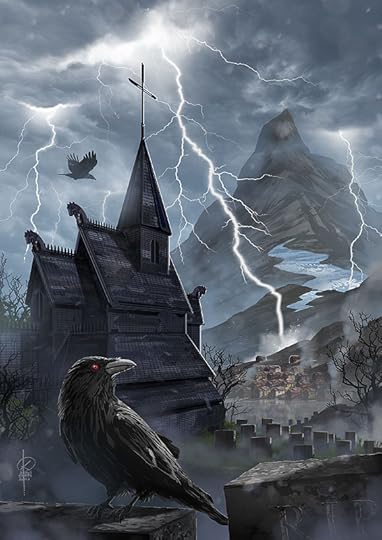
And this, the blue ice cave where the body of a Viking boy is found:
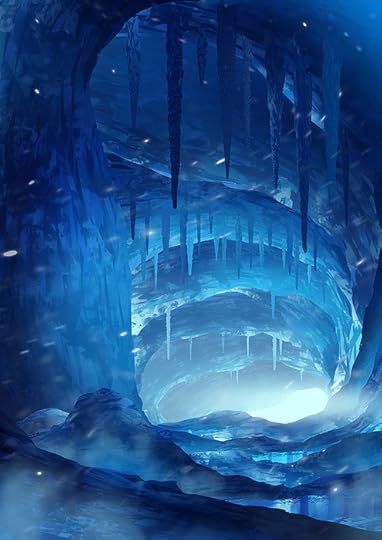
As soon as the trailer is finished, I plan to put it on my HomePage, so watch this space!
If you want to know more about Luca’s profile, check out his own marvellous trailer for his digital sci-fi art book ‘Universes’.
How does your work differ from others of its genre?
Maybe the way it weaves a historical backstory within the main present-day storyline?
Why do you write what you do?
Because I can’t not!
How does your writing process work?
I aim to get the main heartbeats of the story planned before actually writing each chapter. I think about the motivations of the main character – I ask myself What is their goal? and this becomes the driving force for the action.
This is also true for the secret book I’m currently working on and due out in May 2015! More details to follow at some later date! ;)
Next Monday, 26th May, three other writers will take up the “My Writing Process” Blog Tour mantle!
They are:
Sarah Mussi – Queen of Teen with bite
Matt Dickinson – King of the Mountains
Caryl Hart – Picture Book Princess
Enjoy!
February 23, 2014
Fellow Author Sneak Peek!
The Everest Files – Matt Dickinson

Ryan has a promise to keep. To discover the truth about missing Sherpa climber, Kami.
Promised in marriage as a child, there is only one way Kami can pay back the dowry and be with the girl he truly loves… Join the expedition making an attempt on Everest.
Dickinson’s personal experience of filming in extreme environments, and his own ascent of the world’s highest mountain, makes The Everest Files resonate with a rich authenticity, making it a totally compelling read. It gives raw insights into what it means to scale the ultimate peak. Climbing the ice fall; crossing the crevasse; altitude sickness, frostbite, deadly fatigue. Matt D builds the suspense to breaking point.
The Everest Files effortlessly weaves Ryan’s story with Kami’s. It’s a window on the unique culture of the Sherpa people and their interactions with foreigners. From the American politician obsessed with winning votes, to the hardened hunter bent on killing a snow leopard, the book has a wealth of unforgettable characters that feel utterly genuine.
And The Everest Files is ultimately a human story. It explores what we might be capable of when stretched to our physical and psychological limits. The lengths we are prepared to go for the people we love.
November 16, 2013
Authors for the Philippines
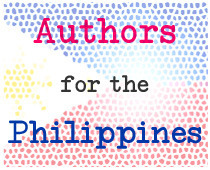 All three of my books are now up for auction on the AUTHORS FOR THE PHILIPPINES website, to raise money for the Red Cross’s Typhoon Haiyan Appeal.
All three of my books are now up for auction on the AUTHORS FOR THE PHILIPPINES website, to raise money for the Red Cross’s Typhoon Haiyan Appeal.
The books will be signed, with a personalised message. Please click HERE to make a bid, and to see the other wonderful author pledges.
But HURRY! Bidding ends on Weds 20th November.
October 15, 2013
A Cover is Born!
I now have a COVER for ARROWHEAD!!
It’s by Jamie Gregory, the same marvellous designer who
created the cover for The Messenger Bird.
THANK YOU, JAMIE!
I think it’s AWESOME!!!!
What do you think????

February 25, 2013
Guest Blog: Ally Kennen
The Problems of Making Believe
An old adage regarding Creative Writing recommends you should
WRITE WHAT YOU KNOW.
THINGS I DO KNOW HOW TO DO:
1) Force feisty muscle- bound toddlers into car seats
(bribe with chocolate buttons)
2) How to cause low-level unease in megalomaniac cats
(occasionally growl at them; gently, but with intent)
3) That’s about all.
But all being well (fingers crossed, nods at magpie etc) I want to write (and publish) lots more books. I have written nine. Seven fattish ones and two thin ones. AND I HAVE NEVER:
1) Kept a man–eating reptile in a drain by a reservoir (BEAST 2006)
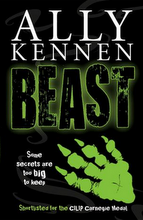
2) Written letters to a murderer on death row pretending to be my mum (BERSERK 2007)
3) Fallen in love with a hunted, puppy-stealing, wild boy (BEDLAM 2009)
4) Arranged a Viking Funeral for my Grandfather (SPARKS 2010)

5) Chased a trapeze artist motorbike thief as they flee along the telephone wires
(THE HEDGEHOG MYSTERY 2011)
6) Taken a game of dares so far it risks my life (QUARRY 2011)
7) Ridden an escaped cow along the highway (DAYBREAK 2012)
8) Been chased by the army over Dartmoor – in my socks (BULLET BOYS 2012)
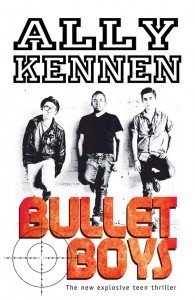
9) Been a child running a hotel inhabited by criminals (MIDNIGHT PIRATES 2013)
So I am writing stuff which is assuredly NOT TRUE. IT IS ALL LIES. The reader enters an unspoken contact that this is made-up, and yet the story needs to be believable or it is unsatisfying. My goal is to entice the reader to suspend disbelief, to self hypnotise and inhabit the otherworld of adventure and story, whilst trying not to rudely drag them from the page with a clumsy penswipe.
The question I am always asking myself, is: ‘where do I draw the line?’ How far can I go? When does a rollicking adventure story turn into an unwieldy heap of poo? I enjoy writing stories which are possible, but only just, I adore the implausible, so I am inhabiting a perilous zone. It makes one cross as one is reading away, immersed in the plot, only to have to throw the thing down in rage shouting I AM SORRY, BUT THAT WOULD NEVER, NEVER, HAPPEN. GRRRR. BURN THIS HEAP OF PAPER. THE TREE THAT WAS SACRIFICED TO MAKE THIS BOOK DIED IN VAIN!
In my new book, MIDNIGHT PIRATES, three children run an isolated Cornish beach hotel by themselves, having run away from school. The hotel is for sale and their parents have gone abroad.
A container, containing a working jet ski, is washed up on their beach, having come off a ship in heavy weather. All this unlikely, but possible. Amongst all this feathering, I do have the children getting hungry, arguing and running out of money. I like to weave some ‘reality’ into my fiction but not too much. I don’t want to read some poor imitation of life, I want to distort and contort it. I want to be Miranda, pulling wigs off grumpy fake mermaids, and 16 year old Cal, night-riding my jet ski with my glorious girlfriend bouncing along on a tyre behind me.

I don’t want to write, or read, too much about real life: waiting for buses, selecting potatoes and giving wry smiles at especially glorious cloud formations. Not unless the bus is being driven by a crazed toddler chasing a freak-cat, whose brain has been addled by a high-pressure storm cloud raining potatoes.
(And I BET a toddler has driven a bus before. I drove a tractor when I was two. So there.)
So we writers have to rely on our own ‘plausibility compass’.
Where do you draw the line, and why?

Photo by Candy Gourlay www.candygourlay.com
Ally Kennen writes for children and teenagers. Her first book ‘Beast’ was shortlisted for the CILIP Carnegie Medal, the Branford Boase Award and the Booktrust Teenage Prize. Her latest book Midnight Pirates was published by Marion Lloyd Books in January 2013.
Find out more about Ally on her website: www.allykennen.com
Follow Ally on twitter: @allykennen
February 18, 2013
Guest Blog: Helen Peters
Country Life and the Writing Life
In Ruth’s thought-provoking piece in the Jan-Feb 2013 SCBWI Bulletin, From a View of the Med to a Garden Shed, she explores the influence of writer setting on story setting, and asks: Does it really matter where you write?

Well, I write in the spare bedroom of my house in London, on a laptop at a table facing a blank wall. But the stories are set on and inspired by the Sussex farm where I grew up.
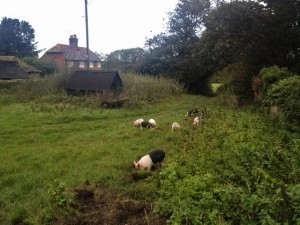
When I was writing The Secret Hen House Theatre, I visited the farm every month for a year, notebook in hand, recording sensory details in different weathers, at different times of day and in different seasons.


I tried to focus on a detail and write down exactly what I saw, smelt, heard and felt, as clearly and simply as I could.

Considering that I had grown up on the farm and visited regularly ever since, I was amazed by how much more I noticed this way. I knew the yard was muddy in winter, of course, but I’d never noticed that the mud was ‘patterned all over with the spiky footprints of chickens’, a detail I wrote in my notebook and ended up using in Chapter Two, when Hannah trudges across the yard, head down, to help catch an escaped pig.

I’m now writing the sequel to The Secret Hen House Theatre and I regularly consult my notebooks to check things like when the blackthorn buds start to appear, or the texture of a swallow’s nest.

I need to consult my notebooks, because all the actual writing of the books is done in London. And I wonder whether, in some ways, distance might be an advantage.
While I find visits to the farm hugely inspiring, I need the distance to process my thoughts. Farm life is not the calm, back-to-nature experience that many city people imagine. Life on a farm is full of extremes: birth and death; beauty and ugliness; triumph and disaster; the natural world and the world of industry, with its vast machines and powerful chemicals. Tenant farmers are at the mercy of so many things: rising rents and unscrupulous landlords as well as disease, the weather and ever-changing prices for the food they produce.
When I’m at the farm, spending time with my family as they try to make a living against powerful odds, I am too emotionally involved to write about it. It’s only after a period of reflection staring at my blank London wall that I can weave all this into my stories.
So, a view of the Med or a garden shed? I think, for a lot of us, the answer is: Both.

The actual shed that inspired the Secret Hen House!

Helen Peter’s debut novel, The Secret Hen House Theatre, has been described by Michael Morpurgo as “a book I didn’t want to end”.
It is on the shortlist for the Solihull Book Award, the Essex Book Award and the Waterstone’s Children’s Book Prize 2013.
Find out more about Helen on the Nosy Crow website HERE!
Follow Helen on twitter: @farmgirlwriter
February 4, 2013
Guest Blog: Caroline Green
It’s a question I get asked all the time when I visit schools. The trouble is, it’s such a blimmin’ difficult one to answer!
I have a mad theory that stories ‘exist’ out there in the ether and we ‘find’ them. Just to mix up my metaphors, I also picture archaeologists unearthing artefacts that have been buried for thousands of years. A bit of chipping away here and some gentle brushing there and…
Voila! A shape begins to emerge from that rough lump of rock. It’s a bit like that with half-formed stories.
But where does the initial spark come from?
To try and answer this I decided to trace the genesis of my book Cracks from the first moment it entered my head.

1. What if?
So I was standing in the shower one day, looking at a tiny crack in one of the tiles. ‘What if the walls started cracking open right now,’ I thought. Then, ‘Hang on! What if it was only me who could see it!’ [I know....but as they say, you don't to be mad but it helps...]
Maybe all stories begin with a variation on the question, ‘what if?’
2. Big ambitions
When I started to write Cracks, I had no publishing deal. The book may have remained in a drawer for ever more. I’d been trying to get Dark Ride published for ages and was feeling a bit jaded with the whole process. With nothing to lose, I decided to write the book I wanted to read. Dammit, I was going to entertain MYSELF!
I was an early fan of The Hunger Games and other dystopian fiction, including Uglies by Scott Westerfeld and Unwind by Neil Schusterman. I wanted to write something in that vein simply because I liked reading that genre.

Katniss in The Hunger Games film
I also wanted to provoke that delicious thrill you get when you read something truly exciting.
Or… watched it.
A shameless fan girl for the David Tennant era of Doctor Who, the best episodes (such as ‘Blink’) also had that magical quality I was after.
3. Helpful earworms
Dave Cousins did a brilliant post here recently about how music shapes his writing. I also find music inspiring but it has to conjure the exact mood I’m trying to pin down. Cracks is set in a repressive future and Muse’s album The Resistance has similar themes.
This song for example, Uprising, had exactly the right vibe for me. I listened to the album on a constant loop while I was writing.
4. Photos and pins
Once I’d got started, I needed visual inspiration for the world I was creating. Part of the book is set in Sheffield in 2024. I had a trip up there one day to take some pictures of buildings and various settings. But the most helpful images were taken closer to home, in London’s Shoreditch. The contrast between old buildings and shiny new ones chimed with the pictures in my mind. This is some graffiti I found on a wall. It made me think of my character Cal, alone and in a strange and hostile world. I used this image as my screensaver while I was writing.

So there you are. The answer to ‘Where do you get your ideas from?’ was, in the case of Cracks:
· A crazy question
· A need to entertain myself
· A little of the right music
· A handful of photos.
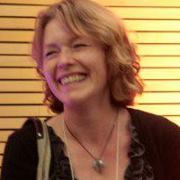 Caroline Green’s first novel, Dark Ride, was nominated for the Branford Boase award and won the RNA Young Adult award. Cracks has been nominated for the Essex, Leeds, Sefton Super Reads, the Catalyst and Amazing Book Awards!
Caroline Green’s first novel, Dark Ride, was nominated for the Branford Boase award and won the RNA Young Adult award. Cracks has been nominated for the Essex, Leeds, Sefton Super Reads, the Catalyst and Amazing Book Awards!
Find out more on Caroline’s website HERE
Follow Caroline on twitter: @carolinesgreen
Watch the Cracks trailer HERE!
Find Dark Ride on amazon HERE
Find Cracks on amazon HERE

… and coming out in June… Hold Your Breath
January 29, 2013
Guest Blog: Matt Dickinson
One of the most common pieces of advice given to aspiring writers is ‘write about what you know’. In my own case I would like to humbly suggest a slight modification to this and to change it to: ‘Write about what has almost killed you.’

Take ‘Mortal Chaos’ for example—a book in which I quite cheerfully plunge a whole host of unwitting characters into throroughly unpleasant life threatening situations. Where did the ideas come from? How many of them were drawn from real events in my own past?
The answer is—quite a few.
In one Mortal Chaos example an eighteen year old girl called Kuni is swept off the North Face of Mt Everest by an avalanche. I had absolutely no problem writing about that one because I have my own avalanche survival story logged in my own mind. Climbing with a small team in Antarctica some years ago, we were fortunate to survive quite a dangerous avalanche event. Later I witnessed more of the awesome power of avalanches making a science documentary for the Channel 4 strand ‘Equinox’.
The noise. The sensation of lungs and mouth filling with air blown snow. The tumbling terror of falling out of control—being in the grip of something that is awesomely powerful. Those recollections all came in handy when writing about Kuni’s plight.
Another example from Mortal Chaos is a scene where a man is attacked with MACE—a powerful anti-mugging spray. Once again, though I shudder to recall that horrible event, I was able to draw on my own direct experience to give the scene extra colour.
It was a bizarre happening; completely unpredictable and it came out of the blue on an underground train in London. An elderly American guy was moving through the carriage, chatting to people and being super friendly. He was a bit of a strange character but he wasn’t doing any harm. But as the train pulled into White City tube, a thug on the carriage took offence to the old American guy and picked a fight. He threw the old guy onto the platform and started to attack him. Me and a fellow BBC producer went to help the old guy back to his feet (and push the attacker away) but as we bent to help him the stunned and confused old guy pulled out a cannister of MACE and—obviously thinking that I was the attacker—sprayed it into my eyes from a distance of about 5cm.
WOW. Nerve gas. Straight into the sensitive parts of my eyes and straight into my lungs which immediately became paralysed. It was like a handful of the hottest chili pepper you can imagine being rubbed straight into the eyeballs. For what seemed to be a lifetime I was unable to snatch a breath. The pain in my eyes was so intense that I really thought I had been blinded with acid.
It was utterly terrifying.
Luckily my friend Roger had missed most of the spray and he helped me to to station bathroom where I put face under a running tap for about twenty minutes.
Later I had my eyes irrigated at the Moorfield eye hospital and the rest of the spray was removed.
We never found out what happened to the American guy…by the time we got back to the platform he and the thug had both vanished.
Those are two particularly unpleasant examples of how my own life experiences have found their way into my fiction but it doesn’t have to be that way. Many novelists rely on extensive research and long hours in libraries in their quest for authenticity. Some very successful books have been set, for example, totally in China or in Africa, when the author quite cheerfully admits he or she has never set foot in the place.
Readers will always suspend belief when they are reading something that is written with passion and conviction. But sometimes that ‘edge’ of real experience can lead to something special.

Are there similar examples in Mortal Chaos 2 and 3…scenes lifted form my own life?
Yes there are but I’m not telling. You’ll just have to guess!
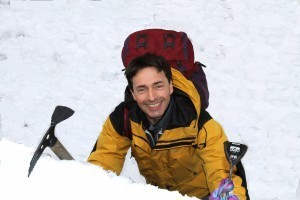
Matt Dickinson’s new book Mortal Chaos: ‘Speed Freaks’ is out now; published by Oxford University Press.
Find out more about Matt’s real-life adventures on his website HERE!
Follow him on Twitter: @Dickinson_Matt
January 21, 2013
Guest Blog: Dave Cousins
If I had to write a list of my top three favourite ‘things’, music would come a close second to books – on the assumption that I can have both reading and writing books as one! The remaining place would be more difficult to fill, though I suspect that in the end, films and football would lose out to the simple pleasure offered by a mug of tea.
I like books and I like music – so books with music in are the equivalent of Christmas and birthday rolled into one!
Killing God by Kevin Brooks is a good example. Dawn, the narrator, is a massive fan of legendary indie fuzz-merchants The Jesus and Mary Chain – she even names her two pet dachshunds Jesus and Mary. The book is scattered with song lyrics and I found myself digging out my old Jesus and Mary Chain records while I was reading. Music can have such a powerful impact on mood, so to be able to actually hear the soundtrack playing in Dawn’s life, took me that much deeper into the story.

Halfway through my first book, 15 Days Without a Head, the main protagonists go to a local outdoor festival where the headline act are a Queen tribute band. I’m not a big Queen fan, but I chose the band because most people know at least one or two Queen songs. I was fairly certain that when I described the opening bars to the song We Will Rock You booming out across the field, that the majority of readers would instantly hear in their head what Laurence was hearing in the story and be transported that little bit closer to the action.
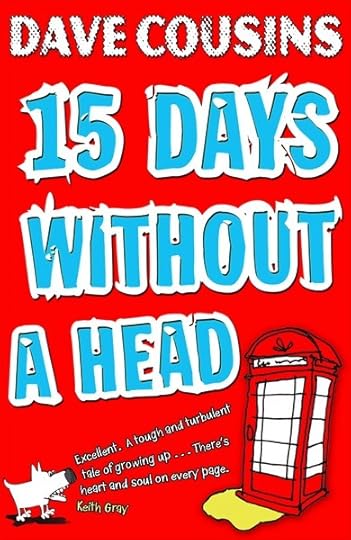
Music plays an even larger role in my new book, Waiting for Gonzo. This time though, I couldn’t rely on a shared musical knowledge. My narrator Oz is a huge music fan – in fact, the music on his phone is sometimes the only thing that keeps him going through the tough parts of the story – but he’s also a bit of an elitist. Oz only listens to obscure bands nobody else has heard of. That moment of ‘discovering’ a new band, feeling like they somehow belong to you, creates a special bond between the listener and the artist, and it was important to the story for Oz to have that.
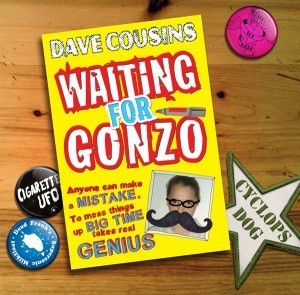
Musical taste is a very subjective thing though, so I thought the best option would be to invent a number of bands and song titles for the book. Which was fine, until my publisher suggested it might be nice to compile a playlist of Oz’s favourite tracks to go online. I explained that this would be difficult, given that the music only existed on the page and in my head!
But it started me thinking – what if readers who enjoyed the book went looking for Dead Frank’s Supersonic Milkfloat, Prayer for Halo, Cyclops Dog and Cigarette UFO, to see if they really did exist? What if they found a few rare tracks hidden away on the internet – wouldn’t that be great? Except you can’t listen to imaginary songs by bands that don’t exist – it’s impossible.
Unless of course, there was a way to bring Dead Frank to life …
Waiting for Gonzo by Dave Cousins, comes out in March.
If you’d like to find out if Dead Frank and the other bands on Oz’s playlist were brought to life, you could always try putting one of the band names into a search engine.
You never know …

Visit Dave’s website
Follow Dave on Twitter @DaveCousins9000
Find him on Facebook
Check out the Edge
(Eight authors writing sharp teen/YA fiction)
Dave’s debut novel, 15days Without a Head has been nominated for both the Branford Boase Award and the Carnegie Medal.
January 10, 2013
A View of the Med to a Garden Shed
I’ve recently written an article for the Society of Children’s Book Writers and Illustrators on this very debate!
Drawing on the experiences of UK SCBWI members, Sarah Mussi and Jon Mayhew, I explore whether full immersion in the setting-of-interest affects the result, or whether a shed at the bottom of the garden, Philip-Pullman-style, does just as well!
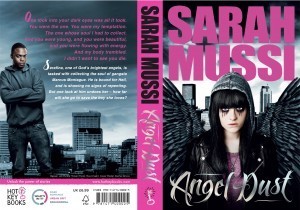
Sarah Mussi: “One day, stuck in (London) traffic, I wondered why this place was called New Cross… and what exactly a ‘new cross’ would be.”
The article appears in the January/February 2013 edition of the SCBWI international Bulletin magazine. You have to be a member to view it, but all writers and illustrators, whether unpublished or published are welcome to join.
For more info, see www.scbwi.org.
Meanwhile, the debate rages on. To add your thoughts, comment below!

You don’t have to be there to write about it, but it helps?
Ruth Eastham's Blog
- Ruth Eastham's profile
- 17 followers



